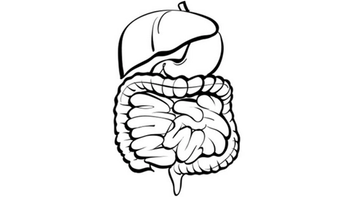
Understanding the INVICTUS Trial
Neeta Somaiah, MD: Now I’m going to discuss data from the phase 3 INVICTUS trial, which led to the approval of ripretinib in fourth-line GIST [gastrointestinal stromal tumor]. The study was a randomized, multicenter study where 129 patients were randomized in a 2:1 fashion to either receive ripretinib, 150 mg once daily, or placebo.
Patients were imaged initially every 4 weeks, so we could pick up progression early, especially in the placebo arm.
Once they were unblinded at the time of progression, if they were on ripretinib, they had 3 choices: either to continue the same ripretinib dose if their physician thought they were deriving clinical benefit; or if they felt they could tolerate it, they were allowed to escalate the dose to 150 mg twice a day; or discontinue based on investigator or patient choice.
If you were on placebo, you had the option to cross over to ripretinib, 150 mg once daily. These patients were followed, and the majority of the patients on this study were heavily pretreated. There were some patients in the fourth-line setting, but many patients had received up to 7 prior lines of therapy.
Patients had a wide range of primary mutations, so they did look at the primary mutations on their archival specimens that were available. The study also involved the collection of liquid biopsies, though we don’t have that result yet in detail.
The majority of patients on this study did have a KIT mutation. A minority had PDGFR mutations, a few of them were wild type, and for a few we didn’t know their mutational status in baseline.
The results of the study showed a statistically significant improvement in the progression-free survival for patients who received the ripretinib versus placebo, which was the primary end point. It was 6.3 months for patients on ripretinib versus 1 month for patients on placebo. At the first scan timepoint, most patients on placebo were progressing.
This is quite classic for patients with GIST. When you remove TKI [tyrosine kinase inhibitor] therapy, or especially beyond third line, these patients tend to do very poorly. A 6.3-month progression-free survival benefit on the ripretinib arm was quite impressive. The response rate showed that 9% of patients on ripretinib had a RECIST [Response Evaluation Criteria in Solid Tumors] response by blinded independent central radiology review, and 0% of patients on placebo had a response. This also translated to a survival advantage, where patients on the ripretinib arm had a median overall survival of 15.1 months compared to 6.6 months on placebo.
These data were very encouraging and led the FDA to approve this drug not too long ago for fourth-line and beyond patients. They did not require baseline mutational testing, so patients with all mutations in the fourth-line setting in the absence of any other agents are approved to receive ripretinib and are likely to derive benefit from it.
The other important thing to know with new drugs is their safety profile. What’s interesting is most patients who have received sunitinib and regorafenib in the second- and third-line setting, when they switched to ripretinib, most of them will notice an improvement in some of the symptoms, especially the hand-foot syndrome.
Patients with ripretinib do have palmar-plantar erythrodysesthesia [PPE], which is what we call the hand-foot syndrome, symptoms, but they’re usually much milder than what we see with sunitinib or regorafenib. Most people are good at managing adverse effects with the previous well-known TKIs. I usually tell patients to continue moisturizing their palms and soles well, and I’ve not had to do a dose reduction for PPE in patients with ripretinib, but just local management.
The other important thing to counsel patients about with ripretinib that was seen on the study, was a little over a 50% rate of alopecia. Unlike other TKIs, where with some of them you see a change in hair color, with ripretinib patients do end up losing their hair. Sometimes it’s hair thinning, but a lot of them will have hair loss.
I would say for most patients in the fourth-line setting, they usually don’t care so much about their hair loss, but for a lot of patients, and especially female patients, it is a big change, so it is important to counsel them up front about this adverse effect that they might experience, and give them adequate resources to manage it, whether it be a wig or what we call a cranial prosthesis, or advise them how to approach this.
You could also send them to a dermatologist, not only because of the alopecia, but there is another adverse effect that that should be monitored, and this is the development of skin lesions that rarely could be precancerous or cancerous. There was a slight increased incidence of the squamous cell cancers and even melanoma that was very minimal. For most of these patients, I do recommend following up with the dermatologist at the sign of any new lesions, and they should at least get a yearly skin examination by a dermatologist.
In addition, the other adverse effects were quite similar to what we would we see with imatinib. There is some fluid retention, some myalgias, but not much.
In general, the grade 3 or 4 toxicity profile is not very different from placebo. Unlike sunitinib and regorafenib, most patients at the starting dose of 150 mg once daily were able to tolerate the drug well, and only 7% needed a dose reduction. With this drug, I usually start at dose, and if they progress, I have dose escalated as well, and they have tolerated it well.
It’s important to keep track of these adverse effects and know them. Another one is high blood pressure, which we’re used to monitoring with sunitinib and regorafenib. It’s actually much less common with this, so sometimes you might need to reduce their antihypertensive dose that they’re on, but some patients might have an increase in blood pressure if they haven’t seen that with the previous drugs as well, so it needs to be monitored.
With any new TKI it’s important to follow laboratory test parameters, and I usually do them every 2 weeks initially for the first month or two on ripretinib, and then you can switch to every month thereafter. It’s important to follow for anemia, the liver function test, but the most common things that are seen with ripretinib are a decrease in phosphorous and an increase in lipase.
The clinical significance of these are not very well known because it hasn’t been linked to an increase in pancreatitis, but it’s important to follow and recognize that this can happen with ripretinib. Of course, for the phosphates, you replace it as you would with any other therapy, and then follow the patients to make sure they’re not developing any other concerning symptoms.
The other finding of importance that came to light with INVICTUS that we all knew, was patients on placebo don’t do very well. You do want to make sure patients with GIST who are progressing get exposed to as many effective or active lines of therapy as possible, and don’t get too much of a break between each of these TKIs because they could rapidly decline in their clinical and performance status.
Some of these data were available through the quality of life parameters that were collected on the INVICTUS study. At the virtual ASCO 2020 [American Society of Clinical Oncology annual meeting], 2 abstracts were presented. One showed that though patients with ripretinib did have a little over 50% rate of alopecia, and the palmar plantar erythrodysesthesia was a little over 20%, the effect of these adverse effects on their quality of life was minimal or decreased over time.
The other thing that was important is patients on ripretinib were able to maintain their quality of life metrics that were collected with 2 questionnaires looking at the visual analog scale and also looking for the role of their physical function in their daily activities. That showed that on ripretinib, there was slight improvement, the numbers were not significant there, but at least it was stable. The patients on placebo noted a decline in their functional status. It is important not to take too long of a break, and know that there is a fourth-line therapy available so patients can switch if they’re progressing on the third-line therapy.
It’s also important to recognize that the mechanism of action of ripretinib is a little different than the previous TKIs. This was a drug specifically designed to target these driver mutations, and it is what we call a switch control inhibitor. In patients with GIST, most of the secondary mutations will be seen in the ATP [adenosine triphosphate] binding site, which are the exon 13 and 14 mutations. Also, mutations are seen in the activation loop, which are exon 17 and 18 mutations. Some drugs effectively target one or the other.
Ripretinib can bind to the switch pocket, the ATP binding site, and also connect to the activation loop, and it locks the molecule in the inactive position. It’s a type 2 inhibitor that locks that in an inactive position, so it doesn’t let the activation loop swing back and cause the transcription for downstream factors in KIT and PDGFR.
Transcript edited for clarity.
Case:
A 68-Year-Old Man With Gastrointestinal Stromal Tumor
Initial presentation
- A 68-year-old man complains of a 4-month history of decreased appetite, vague abdominal discomfort and a sensation of fullness
- PMH: DM, medically controlled; colonoscopy at age 50 was unremarkable; no family history of cancer
- PE: abdominal pain on deep palpation; otherwise unremarkable
Clinical workup
- Labs: Hb 10.5 g/dL, plt 105 x 109/L; other lab values WNL
- Endoscopy: showeda submucosal ~6 cm mass with ulceration
- EUS: irregular borders on extraluminal surfaces with marginal halo and hyperechogenic spots
- FNA biopsy: mitotic activity showed >5 mitoses/50 HPFs
- Mutational testing: WT-GIST
- Abdominal/pelvic CT confirmed a 6.2 cm lesion with indistinct margins in the body of the stomach
- MRI showed 3 small hepatic lesions consistent with metastases
- Stage IV; ECOG 0
Treatment
- He was started on imatinib 400 mg PO qDay, continued for 24 months until he complained of increased abdominal pain and an additional 8-lb weight loss
- ECOG 1; Imatinib was discontinued
- Treatment initiated with sunitinib 50 mg PO qDay for 4 weeks, with a 2-week drug-free interval
- Treatment was well tolerated for 3 cycles when he developed nausea and vomiting; dose reduced to 25 mg PO qDay without resolution of AEs; sunitinib was discontinued
- Regorafenib 160 mg (four 40 mg tablets) PO qDay for the first 21 days of each 28-day cycle was started, poorly tolerated
- Repeat lab work showed: Hb 8.9, AST 65 IU/I; regorafenib was discontinued
- The patient was started on ripretinib 150 mg PO qDay









































